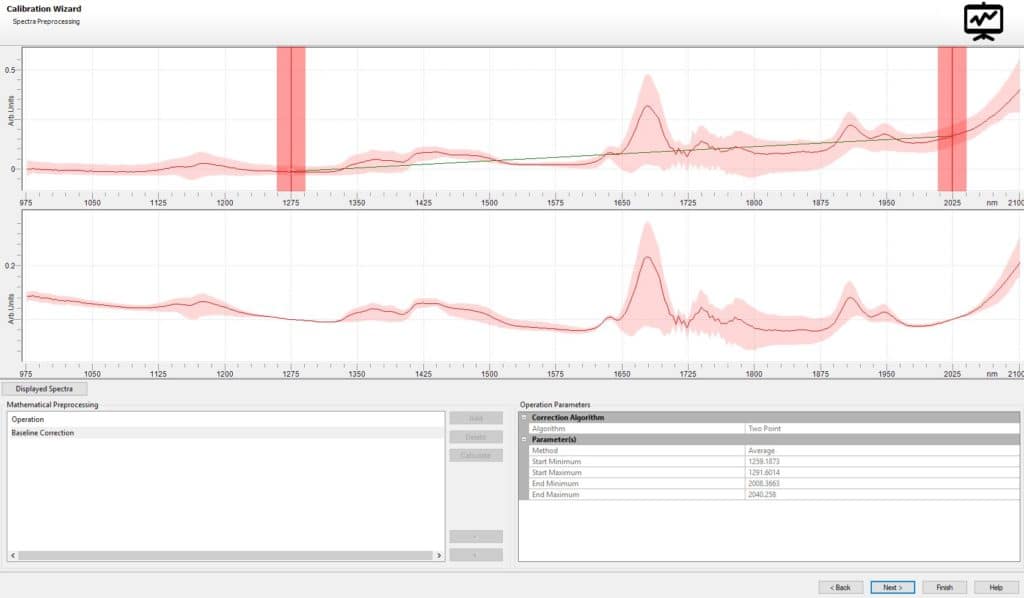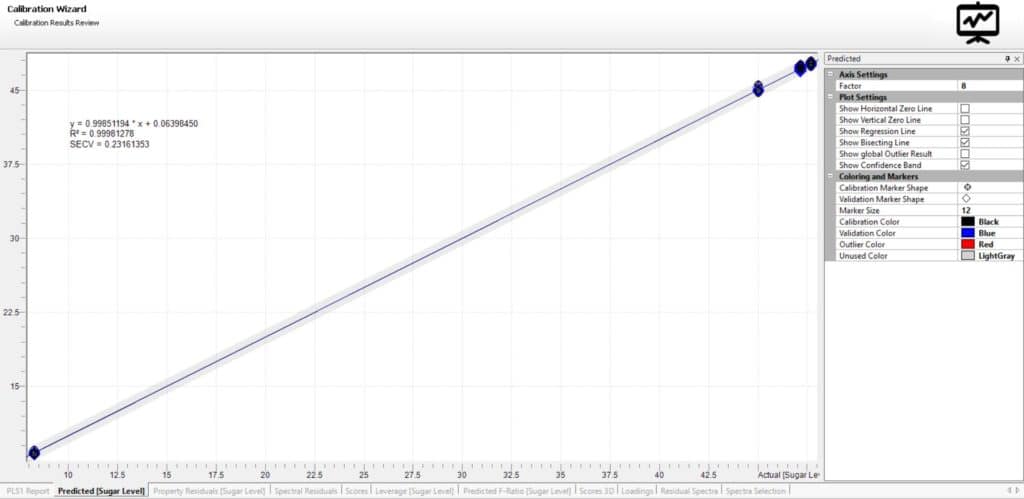Chemometrics/Fruit Analysis
The application of visible (400 nm to 750 nm) and near-infrared red (750 nm to 2500 nm) region spectroscopy to assess fruit and vegetables is an efficient way to measure the properties of the fruit, as opposed to multi or hyperspectral imaging. Vis spectroscopy targets color assessment and pigment analysis, while NIR spectroscopy has been applied to the assessment of food quality and ripeness in fresh produce in commercial practice, and a wide range of attributes in scientific studies.
Pairing this information with a chemometric model can aid in the easy identification of fruit quality, which can aid in rapid food sorting for commercial applications.
System Description
A halogen light source is ideal for color measurements because of its good output between the wavelengths of 380nm-780nm, which is the wavelength range of visible light that the human eye can detect. A halogen light source used in this testing, an Avantes AvaLight-HAL-S-Mini. In the region of visible light to near-infrared, that’s where the AvaLight-HAL-S-Mini works best. The AvaLight-HAL-S-Mini is a compact, stabilized halogen light source with adjustable focusing of the fiber connection, maximizing output power at the desired wavelength. This versatile light source also has adjustable output power to provide extra power or longer bulb life. A filter-slot mounted on the front of the AvaLight-HAL-S-Mini accepts 1″ round or 2″x2″ square filters, to block specific ranges of wavelengths or instantly lower the intensity. The adjustable focus on the AvaLight-HAL-S-Mini helps you get the most out of your light source: it makes sure all possible power is transmitted through your optical fiber. Bulb replacement is easy and can be done in a matter of minutes.
The AvaSpec-Mini-NIR is a compact near-infrared spectrometer, based on a combination of our popular AvaSpec-NIR256-1.7 and Mini-series. This NIR spectrometer might not be as sensitive as our bigger NIR spectrometers, but this loss in sensitivity is greatly compensated by its size and robustness. Like our other CompactLine spectrometers, this device is only the size of a deck of cards and USB powered, which makes it easy to integrate into other devices, including but not limited to OEM handheld applications. This versatile miniature NIR spectrometer is well suited for various applications, including food analysis and the recycling industry. For this testing, the configuration used has a useable range of 950 nm to 1700 nm. It is also fitted with a Slit-50 and an OSF-850.
Methodology

Figure 1: The setup of the experiment.
For this experiment, the software Panorama, developed by Labcognition, is utilized. Panorama is a powerful spectroscopic tool capable of fully controlling Avantes instruments to give the user the ability to not only collect and save data but compile this data into a mathematical calibration that is generated through the software. This experiment used various fruit samples with our refractometer to generate a mathematical model capable of predicting the amount of sugar in these samples.
A refractometer is a simple instrument used for measuring concentrations of aqueous solutions. It requires only a few drops of liquid and is used throughout the food, agricultural, chemical, and manufacturing industries. We will use our refractometer to measure the sugar level in a fresh strawberry, orange, and avocado. We will then measure the absorbance spectra of each fruit, and then utilize panorama to correlate the absorbance spectra with the sugar level as indicated by the refractometer.
Test Data and Results
Displayed below is the chemometric data and model:
Integration time: 500 ms
Averaging: 10
Analysis
Comparing the collected data with the know absorbance spectra for strawberries, oranges and avocados, our absorbance spectra for these fruits match very closely. This goes to show how using fiber-optic spectroscopy for chemometric models on sugar levels and ripeness of fruits can rapidly improve the analysis and sorting process of fruits.
Conclusion
In conclusion, the AvaSpec-Mini-NIR spectrometer combined with the powerful capabilities of Panorama, can produce a highly accurate chemometric model capable of predicting the quality, condition, and ripeness of fruit. In order to further improve this model, additional samples can be added to the calibration. This model development could be applied to a variety of fruits and nutraceuticals products in liquid or powder form with the caveat that sample homogeneity is critical to success with these types of samples.
 My Cart
My Cart 


